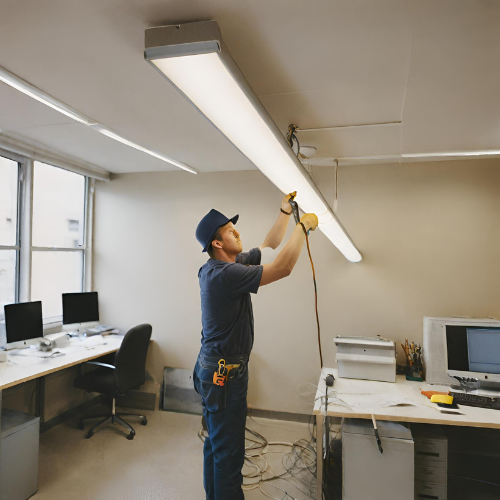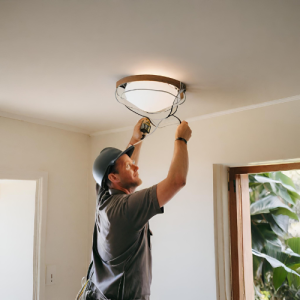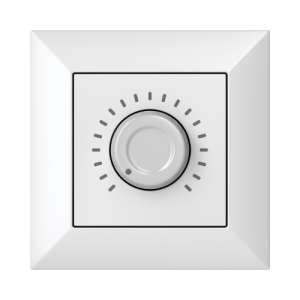Tube Light Repairing: A Comprehensive Guide
Tube light Repairing?, a staple in both residential and commercial settings, provide efficient and bright illumination. However, like any electrical appliance, they are susceptible to malfunctions. When your tube light fails to function properly, it can be both frustrating and inconvenient. This comprehensive guide will walk you through the essentials of tube light repairing, enabling you to troubleshoot common issues and potentially fix them yourself.
Understanding Tube Lights Repairing
To effectively tube light repairing, it’s crucial to understand their basic components. Here’s a breakdown:
- Fluorescent Tube: The long, cylindrical glass tube that contains inert gas and mercury vapor. This is the primary component responsible for generating light.
- Starters: These devices are responsible for initiating the starting process of the tube light. They help in lighting up the fluorescent tube.
- Choke (or Ballast): This component regulates the flow of electricity to the tube. It is essential for starting and maintaining the electric arc within the tube.
- Ballast: Often used interchangeably with the choke, it helps in stabilizing the electric current passing through the tube light.
Understanding these components will help you diagnose and repair issues more effectively.
Common Tube Light Problems
Several issues can prevent a tube light from functioning properly. Here are several common issues along with their possible causes:
- Flickering: This can be due to a faulty starter, ballast, or tube. Flickering often indicates that the electric arc within the tube is unstable.
- No Light: If the tube light is not illuminating at all, it might be due to a burnt-out tube, a faulty starter, or a malfunctioning ballast.
- Dim Light: A tube light that is dimmer than usual could be suffering from a deteriorating tube, a faulty starter, or an issue with the ballast.
- Buzzing Noise: An unusual buzzing sound can be caused by a faulty starter or ballast. This noise typically indicates an issue with the electrical components.
Troubleshooting Tube Light Repairing Issues
Before replacing any components, it’s important to identify the root cause of the problem. Follow these troubleshooting steps:
- Check the Starter: A faulty starter is a common cause of tube light problems. Replacing the starter is a simple and cost-effective solution. Make sure to use a new starter of the same type and wattage.
- Examine the Tube: If replacing the starter doesn’t solve the problem, the tube itself might be burnt out. Swap the old tube with a new one of the same type and wattage.
- Inspect the Ballast: If neither the starter nor the tube resolves the issue, the ballast could be at fault. Replacing the ballast can be more complex and may require professional assistance if you are not comfortable handling electrical components.
- Check Wiring: Ensure that all wiring connections are secure. Loose or damaged wires can cause intermittent problems with the tube light.
Safety Precautions
When working with electrical components, prioritizing safety is essential:
- Turn Off the Power: Always switch off the main power supply to the tube light before attempting any repairs.
This helps minimize the risk of electric shock.
- Use Proper Tools: Employ insulated tools to avoid accidental electric shocks. This is crucial when working with live electrical components.
- Handle with Care: Be cautious when handling fluorescent tubes as they contain mercury, which can be hazardous if the tube is broken.
Professional Tube Light Repairing
If you’re unable to diagnose or fix the issue yourself, it’s advisable to seek professional tube light repairing services. Experienced technicians have the expertise and tools needed to accurately identify and resolve problems efficiently. They can provide a more reliable and long-term solution, especially for complex issues or if you are uncomfortable with handling electrical components.
Prevention and Maintenance
To extend the lifespan of your tube lights and prevent frequent issues, consider these preventive measures:
- Regular Cleaning: Dust and dirt can impact the performance of tube lights. Clean the fixtures regularly to ensure optimal performance.
- Avoid Frequent Switching: Frequent on-off cycles can shorten the lifespan of the tube. Try to keep the tube light on for longer periods rather than switching it on and off frequently.
- Proper Installation: Ensure that the tube light is installed correctly. Poor installation can lead to premature failures and require more frequent repairs.
By adhering to these maintenance practices and seeking professional help when needed, you can effectively manage and maintain your tube lights. This will ensure optimal lighting, enhance energy efficiency, and minimize the need for frequent repairs.
In summary, tube light repairing involves understanding the components, troubleshooting common issues, and taking necessary safety precautions. Whether you decide to tackle repairs yourself or seek professional assistance, a proactive approach to maintenance will help you get the most out of your tube lights and keep your environment well-lit and efficient.
Homefixer.pk is a best choice for Tube Light Repairing and Home Services in Karachi Lahore and Islamabad.








There are no reviews yet.